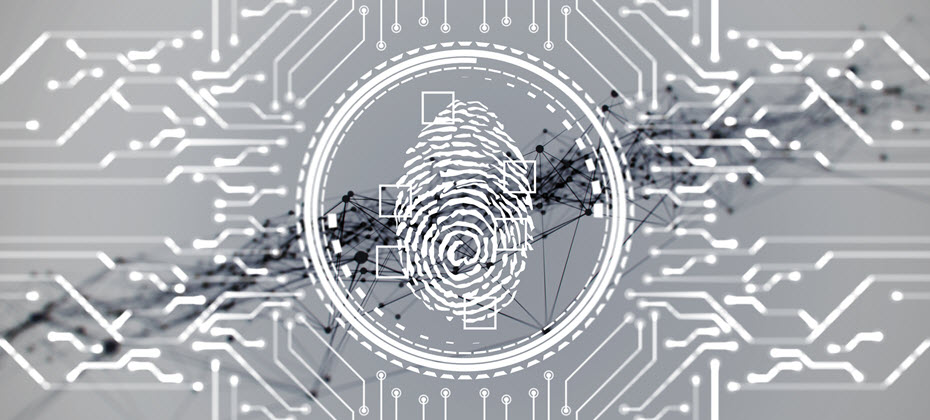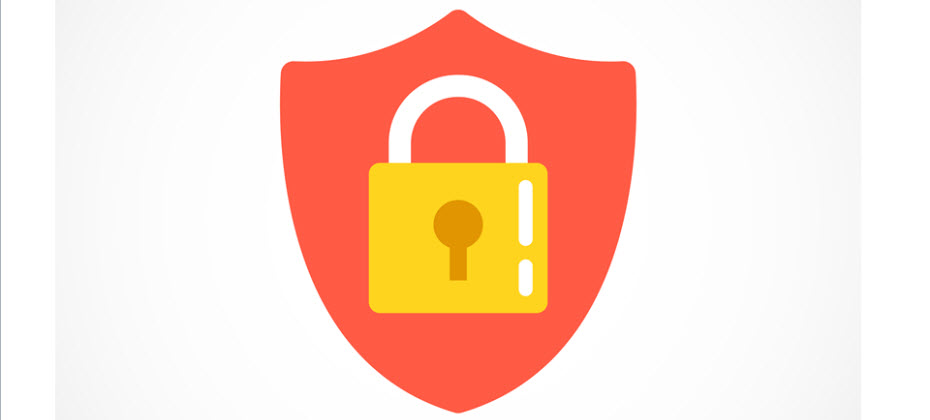Ecommerce / Retail

Prescreen, prequalification and preapproval. The terms sound similar, but lenders beware. These credit solutions are quite different and regulations vary depending on which product is utilized. Let’s break it down … What’s involved with a prescreen? Prescreen is a behind-the-scenes process that screens consumers for a firm offer of credit without their knowledge. Typically, a Credit Reporting Agency, like Experian, will compile a list of consumers who meet specific credit criteria, and then provide the list to a lending institution. Consumers then see messaging like, “You have been approved for a new credit card.” Sometimes, marketing offers use the phrase “You have been preapproved,” but, by definition, these are prescreened offers and have specific notice and screening requirements. This solution is often used to help credit grantors reduce the overall cost of direct mail solicitations by eliminating unqualified prospects, reducing high-risk accounts and targeting the best prospects more effectively before mailing. A firm offer of credit and inquiry posting is required. And, it’s important to note that prescreened offers are governed by the Fair Credit Reporting Act (FCRA). Specifically, the FCRA requires lenders initiating a prescreen to: Provide special notices to consumers offered credit based on the prescreened list; Extend firm offers of credit to consumers who passed the prescreening, but allows lenders to limit the offers to those who passed the prescreening; Maintain records regarding the prescreened lists; and Allow for consumers to opt-out of prescreened offers. Lenders and the Consumer Reporting Agencies must scrub the list against the opt-outs. Finally, it is important to note that a soft inquiry is always logged to the consumer’s credit file during the prescreen process. What’s involved with a prequalification? Prequalification, on the other hand, is a consumer consent-based credit screening tool where the consumer opts-in to see which credit products they may be qualified for in real time at the point of contact. Unlike a prescreen which is initiated by the lender, the prequalification is initiated by the consumer. In this instance, envision a consumer visiting a bank and inquiring about whether or not they would qualify for a credit card. During a prequalification, the lender can actually explore if the consumer would be eligible for multiple credit products – perhaps a personal loan or HELOC as well. The consumer can then decide if they would like to proceed with the offer(s). A soft inquiry is always logged to the consumer’s credit file, and the consumer can be presented with multiple credit options for qualification. No firm offer of credit is required, but adverse action may be required, and it is up to the client’s legal counsel to determine the manner, content, and timing of adverse action. When the consumer is ready to apply, a hard inquiry must be logged to the consumer’s file for the underwriting process. How will a prequalification or prescreen invitation/offer impact a consumer’s credit report? Inquiries generated by prequalification offers will appear on a consumer’s credit report as a soft inquiry. For “soft” inquiries, in both prescreen and prequalification instances, there is no impact to the consumer’s credit score. However, once the consumer elects to proceed with officially applying for and/or accepting a new line of credit, the hard inquiry will be noted in the consumer’s report, and the credit score may be impacted. Typically, a hard inquiry subtracts a few points from a consumer’s credit score, but only for a year, depending on the scoring model. --- Each of these product solutions have their place among lenders. Just be careful about using the terms interchangeably and ensure you understand the regulatory compliance mandates attached to each. More info on Prequalification More Info on Prescreen

There has been a lot of discussion around the auto loan market regarding delinquency rates in the past year. It is a topic Experian is asked about frequently from clients in regard to what particular economic market behaviors mean for the overall consumer lending. To understand this issue more clearly, I ran a deeper dive on the data from our Q3 Experian-Oliver Wyman Market Intelligence report. There are some interesting, and perhaps concerning, trends in the data for automotive loans and leases. Want Insights on the latest consumer credit trends? Register for our 2016 year-end review webinar. Register now Auto loan delinquency rates are at their highest mark since 2008 The findings indicate that the performance of the most recent loans opened from Q4 2015 are now performing as poorly as the loans from the credit crisis back in 2008. In fact, you have to go back to 2008, and in some cases, 2007, to see loan default rates as poorly as the Q4 2015 auto loans originated in the last year. Below we have the auto loan vintage performance for loans originated in Q4 of the last 8 years — going back to 2008. The lines on the chart each represent 60 days late or more (60+) delinquency rates over specific time period grades. For these charts, I analyzed the first three, six, and nine months from the loan origination date. As you can see, the rates of delinquency have steadily increased in recent years, with the increase in the Q4 2015 loans opened equaling or even surpassing 2008 levels. The above chart reflects all credit grades, so one might think that this change is a result of the change in the credit origination mix. By digging a little deeper into the data, we can control for the VantageScore® credit score at the loan opening, or origination date, and review performance by looking at two different score segments separately. Is there concern for Superprime and Prime consumers auto loans? In the chart immediately below, the same analysis as above has been conducted, but only for trades originated by Superprime and Prime consumers at the time of origination. You can see that although the trend is not as pronounced as when all grades are considered, even these tiers of consumers are showing significant increases in their 60+ days past due (DPD) rates in recent vintages. Separately, looking at the Subprime and Deep Subprime segments, you can really see the dramatic changes that have occurred in the performance of recent auto vintages. Holding score segments constant, the data indicates a rate of credit deterioration in the Subprime and Deep Subprime segments that we have not observed since at least 2008 — back to when we started tracking this data. What’s concerning here is not only the absolute values of the vintage delinquencies but also the trend, which is moving upward for all three time periods. Where does the risk fall? Now that we see the evidence of the deterioration of credit performance across the credit spectrum, one might ask – who is bearing the risk in these recent vintages? Taking a closer look at the chart below, you can see the significant increase in the volumes of loans across lender type, but particularly interesting to me is the increase in 2016 for the Captive Auto lenders and Credit Unions, who are hitting highs in their lending volumes in recent quarters. If the above trend holds and the trajectory continues, this suggests exposure issues for those lenders with higher volumes in recent months. What does this mean for your business? Speak to Experian's global consulting practice to learn more. Learn more Just to be thorough, let's continue and look at the relative amounts of loans going to the different score segments by each of the lender types. Comparing the lender type and the score segments (below) reveals that finance lenders have a greater than average exposure to the Subprime and Deep Subprime segments. To summarize, although auto lending has recently been viewed as a segment where loan performance is good, relative to historical levels, I believe, the above data signals a striking change in that perspective. Recent loan performance has weakened to a point where comparing the 2008 vintage with 2015 vintage, one might not be able to distinguish between the two. // <![CDATA[ var elems={'winWidth':window.innerWidth,'winTol':600,'rotTol':800,'hgtTol':1500}, updRes=function(){var xAxislabelSize=function(){if(elems.winWidth<elems.winTol){return'12px'}else{return'14px'}},xAxislabelRotation=function(){if(elems.winWidth<elems.rotTol){return-90}else{return 0}},seriesLabelSize=function(){if(elems.winWidth<elems.winTol){return'12px'}else{return'16px'}},legenLabelSize=function(){if(elems.winWidth<elems.winTol){return'12px'}else{return'16px'}},chartHeight=function(){if(elems.winWidth<elems.rotTol){return 600}else{return 400}},labelInside=function(){if(elems.winWidth<elems.rotTol){return false}else{return true}},chartStack=function(){if(elems.winWidth<elems.rotTol){return null}else{return'normal'}};this.sourceRef=function(){return['Source: Experian.com']};this.seriesColor=function(){return['#982881','#0d6eb6','#26478D','#d72b80','#575756','#b02383']};this.chartFontFamily=function(){return'"Roboto",Helvetica,Arial,sans-serif'};this.xAxislabelSize=function(){return xAxislabelSize()};this.xAxislabelOverflow=function(){return'none'};this.xAxislabelRotation=function(){return xAxislabelRotation()};this.seriesLabelSize=function(){return seriesLabelSize()};this.legenLabelSize=function(){return legenLabelSize()};this.chartHeight=function(){return chartHeight()};this.labelInside=function(){return labelInside()};this.chartStack=function(){return chartStack()}}(), updY=function(chart){var points=chart.series[0].points;for(var i=0;i elems.rotTol){if(thisWidth<20){var y=points[i].dataLabel.y;y-=10;points[i].dataLabel.css({color:'#575756'}).attr({y:y-thisWidth})}}}},updX=function(chart){var points=chart.series[0].points;for(var i=0;i elems.rotTol){if(thisWidth

Personal loans have been booming for the past couple of years with double-digit growth year-over-year. But the party can’t last forever, right? In a recent Experian webinar, experts noted they have seen originations leveling off. In fact, numbers indicate it’s gone from leveled off to a slight year-over-year decline. They projected the first quarter of calendar year 2017 may also be down, but then we’ll see a peak again in the second quarter, which is typical with the seasonality often associated with personal loans. The landscape is changing. A recent data pull revealed a 9-point shift in the average VantageScore® credit score for originations from Q3 to Q4 of 2016. Lenders are digging deeper in order to keep their loan volumes up, and it is definitely a more competitive marketplace. The days where lenders were once able to grow their personal loan business with little effort are gone. Kelley Motley, Experian’s director of analytics, noted some of the personal loan origination volume shifts may be due to the rebound in the housing market and increased housing values, enabling super-prime and prime consumers to now also consider home equity loans and lines of credit, in lieu of personal loans. Still, the personal loan market is healthy. Lenders just need to be smart about their marketing efforts and utilize data to improve their response rates, expand their risk criteria to identify consumers trending upward in the credit ranks, and then retain them as their cash-flow and financial situations evolve. In the presentation, experts revealed a few interesting stats: 67% of those that open a personal installment loan had a revolving trade with a balance >$0 5% of consumer that close a personal loan reopen another within a few months of the original loan closure 68% of consumers that re-open a new personal loan within a short timeframe of closing another personal loan do so with the same company Together, these stats illustrate that individuals are largely leveraging personal loans to consolidate debt or perhaps fund an expense like a vacation or an unexpected event. Once the consumer comes into cash, they’ll pay off the loan, but consider revisiting a personal loan again if their financial situation warrants it. The calendar year Q2 peak has been consistent since the Great Recession. For many consumers, after racking up holiday debt and end-of-year expenses, the bills start coming in during the first quarter. With the high APRs often attached to revolving cards, there is a sense of urgency to consolidate and lock in a more reasonable rate. Others utilize the personal loan to fund weddings, vacations and home improvement projects. Kyle Matthies, a senior product manager for Experian, reminded participants that most people don’t need your product, so it’s essential to leverage data find those that do. Utilizing propensity score and attributes, as well as tools to dig into ability-to-pay metrics and offer alignment can really fine-tune both an organization’s marketing and retention strategies. To learn more about the current state of personal loans, access our free webinar How lenders can capitalize on the growth in personal loans.

When you think of criteria for prescreen credit marketing, what comes to mind? Most people will immediately discuss the risk criteria used to ensure consumers receiving the mailing will qualify for the product offered. Others mention targeting criteria to increase response rates and ROI. But if this is all you’re looking at, chances are you’re not seeing the whole picture. When it comes to building campaigns, marketers should consider the entire customer lifecycle, not just response rates. Yes, response rates drive ROI and can usually be measured within a couple months of the campaign drop. But what happens after the accounts get booked? Traditionally, marketers view what happens after origination as the responsibility of other teams. Managing delinquencies, attrition, and loyalty are fringe issues for the marketing manager, not the main focus. But more and more, marketers must expand their role in the organization by taking a comprehensive approach to credit marketing. In fact, truly successful campaigns will target consumers that build lasting relationships with the institution by using the three pillars of comprehensive credit marketing. Pillar #1: Maximize Response Rates At any point in time, most consumers have no interest in your products. You don’t have to look far to prove this out. Many marketing campaigns are lucky to achieve greater than a 1% response rate. As a result, marketers frequently leverage propensity to open models to improve results. These scores are highly effective at identifying consumers who are most likely to be receptive to your offer, while saving those that are not for future efforts. However, many stop with this single dimension. The fact is no propensity tool can pick out 100% of responders. Layering just a couple credit attributes to a propensity score allows you to swap in new consumers. Simultaneously, credit attributes can identify consumers with high propensity scores that are actually unlikely to open a new account. The net effect is even higher response rates than can be achieved by using a propensity score alone. Pillar #2: Risk Expansion Credit criteria are usually set using a risk score with some additional attributes. For example, a lender may target consumers with a credit score greater than 700 and no derogatory or delinquent accounts reported in the past 12 months. But, most of this data is based on a “snapshot” of the credit profile and ignores trends in the consumer’s use of credit. Consider a consumer who currently has a 690 credit score and has spent the past six months paying down debt. During that time, utilization has dropped from 66% to 41%, they’ve paid off and closed two trades, and balances have reduced from $21,000 to $13,000. However, if you only target consumers with a score greater than 700, this consumer would never appear on your prescreen list. Trended data helps spot how consumers use data over time. Using swap set analysis, you can expand your approval criteria without taking on the incremental risk. Being there when a consumer needs you is the first step in building long-term relationships. Pillar #3: Customer profitability and early attrition There’s more to profitability than just originating loans. What happens to your profitability assumptions when a consumer opens a loan and closes it within a few months? According to recent research by Experian, as many as 26% of prime and super-prime consumers, and 38% of near-prime consumers had closed a personal loan trade within nine months of opening. Further, nearly 32% of consumers who closed a loan early opened a new personal loan trade within a few months. Segmentation can help identify consumers who are likely to close a personal loan early, giving account management teams a head start to try and retain them. As it turns out, many consumers use personal loans as a form of revolving debt. These consumers occasionally close existing trades and open new trades to get access to more cash. Anticipating who is likely to close a loan early allows your retention team to focus on understanding their needs. If you don’t, you’re competition will take advantage through their marketing efforts. Building the strategy Building a comprehensive strategy is an iterative process. It’s critical for organizations to understand each campaign is an opportunity to learn and refine the methodology. Consistently leveraging control and test groups and new data assets will allow the process to become more efficient over time. Importantly, marketers should work closely across the organization to understand broader objectives and pain points. Credit data can be used to predict a range of future behaviors. As such, marketing managers should play a greater role as the gatekeepers to the organization’s growth.

As we enter 2017, it’s no surprise people are buying and selling online and using their mobile devices more than ever. At the close of November, Adobe released its online shopping data from Black Friday, Cyber Monday, and the overall holiday season. According to the data, the major November holiday shopping season was driving close to $40 billion in online and mobile revenue alone — a 7.4% increase year-over-year! Every year, we see tremendous growth in spending through online and mobile channels. Interestingly, this pattern is not just indicative of consumer spending and overall market confidence. The consumer pattern also illustrates a clear change in communication preferences — with the ever-present shift toward digital. In general, consumers are interacting more and more through both online and mobile channels for all of their personal needs, including banking and financial services; and the lending community is anxious to continue connecting to consumers where they need them most. No longer is digital communication the “cool thing to do,” but rather it is essential. While Experian’s lending customers still find tremendous success in direct mail prospecting, many financial institutions are preparing to implement an enhanced acquisition strategy in 2017. This strategy includes multi-channel prospecting initiatives to present consumers with preapproved credit offers. In addition to direct mail, our customers are evaluating digital channels such as email, mobile, and other online channels to improve the overall consumer experience and responsiveness. In the latest Digital Banking Report, published in July 2016, email is the top channel financial marketers are turning to for cross-channel marketing after the initial onboarding process (as illustrated in chart 49), but you can see social media and retargeting are rising in the ranks. In Sept., 2016, Experian was named one of the top 100 most innovative companies for a third year by Forbes magazine. A key part of that success was driven by investments in Experian’s Data Lab and Experian Marketing Service’s Audience Engine, which is an audience management platform that changes the way the advertising industry buys and measures media. We are focused on meeting our customers and the consumer where they need us most. Bottom line? As you refine your goals for 2017, the financial services sector should dig deeper when making connections. They must reach consumers where they want to connect – and that means a successful credit marketing strategy will be one that includes both direct mail and digital communications. A new year is the perfect time to re-evaluate those same-old, same-old marketing and acquisition tactics. We're not saying you need to abandon direct mail, but it is certainly time for lenders to complement their direct mail efforts with a savvy digital plan as well. Resolve to do it better in 2017.

Using digital technology like a big bank How was your holiday? Are the chargebacks rolling in yet? It’s no secret - digital technology like mobile device usage has increased significantly over the years, making it a breeding ground for fraudsters. As credit unions continue to grow their membership, their fraud security treatments need to grow as well. Bigger banks are constantly updating their fraud tools and strategies to fight against cybercrime and, therefore, fraudsters are setting their eyes on credit unions. Even as I write this, fraudsters are searching and targeting credit unions that don’t have their mobile channel secured. They attempt to capitalize on any weakness or opportunity: Registering stolen cards to mobile wallets Taking over an account via mobile banking apps Using a retailers’ mobile app to make fraudulent payments Disabling the SIM card in the victim’s phone and diverting the one-time password sent through text message to their own phones These are clever ways to commit fraud. But credit unions are becoming wise to these new threats and are serious about protecting their members. They are incorporating device intelligence with a solid identity authentication service. This multi-layered approach is essential to securing mobile channels, and protecting your Credit Union from chargebacks. To learn more about our fraud solutions, click here.

Experian shares five trends and twists coming over the next 12 months, that could push new boundaries and in many cases improve the customer experience as it pertains to the world of credit and finance.

You know what I love getting in the mail? Holiday cards, magazines, the occasional picturesque catalog. What I don’t open? Credit card offers, invitations to apply for loans and other financial advertisements. Sorry lenders, but these generally go straight into my shredder. Your well-intentioned efforts were a waste in postage, printing and fulfillment costs, and I’m guessing my mail consumption habits are likely shared by millions of other Americans. I’m a cusper, straddling the X and Millennial generations, and it’s no secret people like me have grown accustomed to living on our mobile devices, shopping online and managing our financial lives digitally. While many retailers have wised up to the trends and shifted marketing dollars heavily into the digital space, the financial services industry has been slow to follow. I’m hoping 2017 will be the year they adapt, because solutions are emerging to help lenders deliver firm offers of credit via email, display, retargeting and even social media platforms. There are multiple reasons to make the shift to digital credit marketing. It’s trackable. The beauty of digital marketing is that it can be tracked much more efficiently over direct mail efforts. You can see if offer emails are opened, if banners are clicked, if forms are completed and how quickly all of this takes place. In short, there are more touchpoints to measure and track, and more insights made available to help with marketing and offer optimization. It’s efficient. A solid digital campaign means you now have more flexibility. And once those assets start to deploy and you begin tracking the results, you can additionally optimize on the fly. Subject line not getting the open rate you want? Test a new one. Banners not getting clicked? Change the creative. A portion of your target audience not responding? Capture that feedback sooner rather than later, and strategize again. With direct mail, the lag time is long. With digital, the intelligence gathering begins immediately. It’s what many consumers want. They are spending 25% of their time on mobile devices. Research has found they check their phones and average 46 times per day. They are bouncing from screen to screen, engaging on desktops, tablets, smartphones, wearables and smart TVs. If you want to capture the eyeballs and mindshare of consumers, financial marketers must embrace the delivery of digital offers. Consumer behaviors have evolved, so must lenders. Sure, there is still a place for direct mail efforts, but it would be wasteful to not embrace the world of digital credit marketing and find the right balance between offline and online. It’s a digital world. It’s time financial institutions join the masses and communicate accordingly.

Technology sharing can unlock a more effective strategy in fighting fraud. Experian’s multi-layered and risk-based approach to fraud management is discussed as many businesses are learning that combining data and technology to strengthen their fraud risk strategies can help reduce losses. Evolving fraud schemes, changes in regulatory requirements and the advent of new digital initiatives make it difficult for businesses to manage all of the tools needed to keep up with the relentless pace of change.

Let’s play word association. When I say holiday season, what’s the first thing that comes to mind? Childhood memories. Connecting with family. A special dish mom used to make. Or perhaps it’s budgeting, debt and credit card spend. The holidays can be a stressful time of year for consumers, and also an important time for lenders to anticipate the aftermath of big credit card spend. According to a recent study by Experian and Edelman Intelligence: 48 percent of respondents felt thoughtful when thinking about the season 30 percent felt stressed 24 percent felt overwhelmed. Positive emotions are up across the board this year, which may be a good sign for retailers and bankcard lenders. And if emotion is an indicator of spending, 2016 is looking good. But while the holly-jolly sentiment is high, 56 percent of consumers say holiday shopping puts a strain on their finances. And, 43 percent of respondents said the stress of holiday shopping makes it difficult to enjoy the season. Regardless of stress, consumers are seeking ways to spend. Nearly half of respondents plan to use a major credit card to finance at least a portion of their holiday spending, second only to cash. With 44 percent of consumers saying they feel obligated to spend more than they can afford, it’s easy to see why credit cards are so important this time of year. Bankcard originations have fully rebounded from the recession, exceeding $104 billion in the third quarter of 2016, the highest level since the fourth quarter of 2007. While originations have rebounded, delinquency rates have remained at historic lows. The availability of credit is giving consumers more purchasing power to fund their holiday spending. But what happens next? As it turns out, many consumers resolve to consolidate all that holiday debt in the new year. Experian research shows that balance transfer activity reaches annual highs during the first quarter as consumers seek to simplify repayment and take advantage of lower interest rates. Proactive lenders can take advantage of this activity by making timely offers to consumers in need. At the same time, reactive lenders may feel the pain as balances transfer out of their portfolio. By identifying consumers who are most likely to engage in a card-to-card balance transfers, lenders can anticipate these consumer bankcard trends. The insights can then be used to acquire new customers and balances through prescreen campaigns, while protecting existing balances before they transfer out of an existing lender portfolio. With Black Friday and Cyber Monday behind us, the card balances are likely already rising. Now is the time for lenders to prepare for the January and February consolidations. Those hefty credit card statements are coming soon.

Happy holidays! It’s the holiday season and a festive time of year. Colorful lights, comfort food and holiday songs – all of these things contribute to the celebratory atmosphere which causes many people to let their guards down and many businesses to focus more on service than on risk. Unfortunately, fraudsters and other criminals can make one of the busiest shopping times of the year, a miserable one for their victims. The nature of the stolen data has the potential to create long-term headaches for the organization and tens of millions of individuals. Unlike a retailer or financial breach, where stolen payment cards can be deactivated and new ones issued, the theft of permanent identity information is, well, not easily corrected. You can’t simply reissue Social Security numbers, birth dates, names and addresses. For individuals, we need to internalize this fact: our data has likely been breached, and we need to become vigilant and defend ourselves. Sign-up for a credit monitoring service to be alerted if your data or ID is being used in ways that indicate fraud. Include your children, as well. A child’s identity is far more valuable to a fraudster as they know it can be several years before their stolen identity is detected. The good news is, in addition to the credit bureau, many banks and auto clubs now offer this as a service to their customers. For organizations, the focus should be on two fronts: data protection and fraud prevention. Not just to prevent financial theft, but to preserve trust — trust between organizations and consumers, as well as widespread consumer trust. Organizations must strive to evolve data protection controls and fraud prevention skills to minimize the damage caused by stolen identity data. There are dozens of tools in the industry for identifying that a consumer is who they say they are – and these products are an important part of any anti-fraud strategy. These options may tell you that the combination of elements is the consumer, but do you know that it is the REAL consumer presenting them? The smart solution is to use a broad data set for not only identity verification, but also to check linkage and velocity of use. For example: Is the name linking to other addresses being presented in the past week? Is the phone number showing up to other addresses and names over the past 30 days? Has the SSN matched to other names over the past 90 days? Since yesterday the address matches to four phone numbers and two names – is this a problem? And it must be done in ways that reinforce the trust between consumers and organizations, enhance the customer experience, and frustrate criminals. Click here to learn more about Experian’s products and services that can help. As we go walking in the winter wonderland, remember, the holiday season is a time for cheer… and vigilance!

Which part of the country has bragging rights when it comes to sporting the best consumer credit scores? Drum roll please … Honors go to the Midwest. In fact, eight of the 10 cities with the highest consumer credit scores heralded from Minnesota and Wisconsin. Mankato, Minn., earned the highest ranking with an average credit score of 708 and Greenwood, Miss., placed last with an average credit score of 622. Even better news is that the nation’s average credit score is up four points; 669 to 673 from last year and is only six points away from the 2007 average of 679, which is a promising sign as the economy continues to rebound. Experian’s annual study ranks American cities by credit score and reveals which cities are the best and worst at managing their credit, along with a glimpse at how the nation and each generation is faring. “All credit indicators suggest consumers are not as ‘credit stressed’ — credit card balances and average debt are up while utilization rates remained consistent at 30 percent,” said Michele Raneri, vice president of analytics and new business development at Experian. As for the generational victors, the Silents have an average 730, Boomers come in with 700, Gen X with 655 and Gen Y with 634. We’re also starting to see Gen Z emerge for the first time in the credit ranks with an average score of 631. Couple this news with other favorable economic indicators and it appears the country is humming along in a positive direction. The stock market reached record highs post-election. Bankcard originations and balances continue to grow, dominated by the prime borrower. And the housing market is healthy with boomerang borrowers re-emerging. An estimated 2.5 million Americans will see a foreclosure fall of their credit report between June 2016 and June 2017, creating a new pool of potential buyers with improved credit profiles. More than 12 percent who foreclosed back in the Great Recession have already boomeranged to become homeowners again, while 29 percent who experienced a short sale during that same time have also recently taken on a mortgage. “We are seeing the positive effects of economic recovery with the rise in income and low unemployment reflected in how Americans are managing their credit,” said Raneri. Which means all is good in the world of credit. Of course there is always room for improvement, but this year’s 7th annual state of credit reveals there is much to be thankful for in 2016.

2017 data breach landscape Experian Data Breach Resolution releases its fourth annual Data Breach Industry Forecast report with five key predictions What will the 2017 data breach landscape look like? While many companies have data breach preparedness on their radar, it takes constant vigilance to stay ahead of emerging threats and increasingly sophisticated cybercriminals. To learn more about what risks may lie ahead, Experian Data Breach Resolution released its fourth annual Data Breach Industry Forecast white paper. The industry predictions in the report are rooted in Experian's history helping companies navigate more than 17,000 breaches over the last decade and almost 4,000 breaches in 2016 alone. The anticipated issues include nation-state cyberattacks possibly moving from espionage to full-scale cyber conflicts and new attacks targeting the healthcare industry. "Preparing for a data breach has become much more complex over the last few years," said Michael Bruemmer, vice president at Experian Data Breach Resolution. "Organizations must keep an eye on the many new and constantly evolving threats and address these threats in their incident response plans. Our report sheds a light on a few areas that could be troublesome in 2017 and beyond." "Experian's annual Data Breach Forecast has proven to be great insight for cyber and risk management professionals, particularly in the healthcare sector as the industry adopts emerging technology at a record pace, creating an ever wider cyber-attack surface, adds Ann Patterson, senior vice president, Medical Identity Fraud Alliance (MIFA). "The consequences of a medical data breach are wide-ranging, with devastating effects across the board - from the breached entity to consumers who may experience medical ID fraud to the healthcare industry as a whole. There is no silver bullet for cybersecurity, however, making good use of trends and analysis to keep evolving our cyber protections along with forecasted threats is vital." "The 72 hour notice requirement to EU authorities under the GDPR is going to put U.S.-based organizations in a difficult situation, said Dominic Paluzzi, co-chair of the Data Privacy & Cybersecurity Practice at McDonald Hopkins. "The upcoming EU law may just have the effect of expediting breach notification globally, although 72 hour notice from discovery will be extremely difficult to comply with in many breaches. Organizations' incident response plans should certainly be updated to account for these new laws set to go in effect in 2017." Omer Tene, Vice President of Research and Education for International Association of Privacy Professionals, added "Clearly, the biggest challenge for businesses in 2017 will be preparing for the entry into force of the GDPR, a massive regulatory framework with implications for budget and staff, carrying stiff fines and penalties in an unprecedented amount. Against a backdrop of escalating cyber events, such as the recent attack on Internet backbone orchestrated through IoT devices, companies will need to train, educate and certify their staff to mitigate personal data risks." Download Whitepaper: Fourth Annual 2017 Data Breach Industry Forecast Learn more about the five industry predictions, and issues such as ransomware and international breach notice laws in our the complimentary white paper. Click here to learn more about our fraud products, find additional data breach resources, including webinars, white papers and videos.

Reinventing Identity for the Digital Age Electronic Signature & Records Association (ESRA) conference I recently had the opportunity to speak at the Electronic Signature & Records Association (ESRA) conference in Washington D.C. I was part of a fantastic panel delving into the topic, ‘Reinventing Identity for the Digital Age.’ While certainly hard to do in just an hour, we gave it a go and the dialogue was engaging, healthy in debate, and a conversation that will continue on for years to come. The entirety of the discussion could be summarized as: An attempt to directionally define a digital identity today The future of ownership and potential monetization of trusted identities And the management of identities as they reside behind credentials or the foundations of block chain Again, big questions deserving of big answers. What I will suggest, however, is a definition of a digital identity to debate, embrace, or even deride. Digital identities, at a minimum, should now be considered as a triad of 1) verified personally identifiable information, 2) the collective set of devices through which that identity transacts, and 3) the transactional (monetary or non-monetary) history of that identity. Understanding all three components of an identity can allow institutions to engage with their customers with a more holistic view that will enable the establishment of omni-channel communications and accounts, trusted access credentials, and customer vs. account-level risk assessment and decisioning. In tandem with advances in credentialing and transactional authorization such as biometrics, block chain, and e-signatures, focus should also remain on what we at Experian consider the three pillars of identity relationship management: Identity proofing (verification that the person is who they claim to be at a specific point in time) Authentication (ongoing verification of a person’s identity) Identity management (ongoing monitoring of a person’s identity) As stronger credentialing facilitates more trust and open functionality in non-face-to-face transactions, more risk is inherently added to those credentials. Therefore, it becomes vital that a single snapshot approach to traditionally transaction-based authentication is replaced with a notion of identity relationship management that drives more contextual authentication. The context thus expands to triangulate previous identity proofing results, current transactional characteristics (risk and reward), and any updated risk attributes associated with the identity that can be gleaned. The bottom line is that identity risk changes over time. Some identities become more trustworthy … some become less so. Better credentials and more secure transactional rails improve our experiences as consumers and better protect our personal information. They cannot, however, replace the need to know what’s going on with the real person who owns those credentials or transacts on those rails. Consumers will continue to become more owners of their digital identity as they grant access to it across multiple applications. Institutions are already engaged in strategies to monetize trusted and shareable identities across markets. Realizing the dynamic nature of identity risk, and implementing methods to measure that risk over time, will better enable those two initiatives. Click here to read more about Identity Relationship Management.

Experian is recognized as a leading security solution provider for fraud and identity solutions in order to protect customers and financial institutions